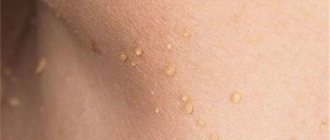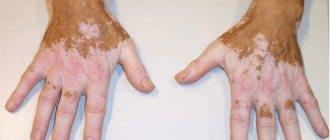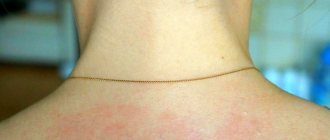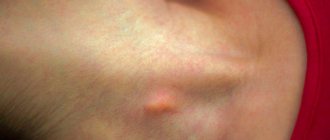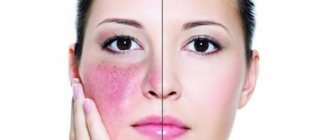Definition
An infectious disease can be transmitted through air, water, food, or through contact with a sick person, and transmission from mother to child is also possible. The main criterion for infection is the pathogen.
Vitiligo is not an infectious pathology that spreads through contact with infected people. Vitiligo is caused by partial disturbances in the metabolism of melanin in the skin caused by changes in discoloration. There is no source of infection, so the condition is not infectious.
The skin does not have its characteristic color because it has lost its melanin. For some reason, the pigment-forming cells known as melanocytes are destroyed. There are a lot of these reasons. Although vitiligo affects all races equally, dark-skinned people are more susceptible to the disease.
Typically affects body folds (such as the armpits), places that have been injured in the past, and areas exposed to the sun, around moles or around the anus and labia. It can also affect the eyelids and hair.
This pathology refers to a kind of polygenic hereditary disease. But inheritance is just one factor that causes vitiligo. As a rule, lifestyle and environment also influence the development of pathology.
There are many factors that cause vitiligo: stress, trauma, surgery, long-term short-wave ultraviolet radiation, various ionization radiation, certain chemicals, stimulation, allergies and other skin diseases such as psoriasis. Some liver diseases, especially thyroid diseases and malnutrition, etc.
In fact, vitiligo is associated with inheritance. It is possible that if parents are sick with this pathology, then their children will also get sick. According to research, if parents have this condition, the chance of their children getting the disease is about 3-7%.
After several years of research, scientists have confirmed that vitiligo is an autoimmune disease. The immune system damages its own pigment cells, causing a local decline in pigment cells and decline in function.
Causes
Vitiligo is a common skin disease in India, the Middle East, and also South Africa. It has a major impact on people's lives, on social work and on quality of life.
Vitiligo is a skin condition characterized by white patches. Factors that can cause the disease:
- Long-term contact with the allergen. There are many allergens that can lead to pathological changes in the skin, such as ivy, oak, all kinds of detergents for cleaning kitchens or baths.
- Long-term use of certain drugs. Based on the research, many patients have experience taking certain medications such as vitamins, antibiotics.
- Cosmetics. According to the study, women often use cosmetic products marketed for intimate hygiene. They can also cause white spots to appear, and pregnancy can make the condition worse. Therefore, women should pay more attention to what products they use.
- Skin diseases. Some skin diseases are associated with dissimulation or taking immunosuppressive therapy, such as systemic lupus erythematosus, diabetes, syphilis, tuberculosis, etc. This type of women has low immunity.
- Eating habits. This should also be taken into account. Some foods worsen the condition but do not cause vitiligo, so doctors strongly recommend following a certain diet for this disease.
The cause of vulvar vitiligo can also be predisposing factors such as chronic inflammation of the urogenital area, constant stress, diseases of internal organs, intoxication together with liver pathologies, destruction and physiological disorders of gland secretion, deficiency of copper, selenium and zinc ions.
Persistent erythema (fixed drug rash)
Refers to drug reactions.
Persistent erythema
Clinical picture:
- Sudden appearance of single or multiple, well-demarcated, round erythematous plaques and swelling on the skin of the shaft of the penis and glans.
- Recurrence of lesions in the same place is typical when using a specific drug (most often from the group of barbiturates, salicylates, tetracyclines).
- Skin changes may be accompanied by pain and itching. Sometimes they develop into bullous lesions.
- Repeated relapses may leave a post-inflammatory discoloration.
It is important to distinguish pathology from genital herpes. Diagnostic testing requires histopathological examination. The condition is difficult to recognize due to its similarities to Zun's eczema and inflammation.
Treatment: Avoid using the drug that causes the changes.
Symptoms
The best time to treat all diseases is the early stage. But unfortunately, most patients do not recognize the disease at the initial stage due to a lack of knowledge. Therefore, if you have any symptoms that were not previously present, you should consult a doctor.
Skin damage is an early symptom of vitiligo. The disease does not cause itching or discomfort in the labia and vagina. Vitiligo on the genitals occurs in the same way as on other parts of the body.
Source: doloypsoriaz.ru
First, pigmentation appears on open areas of the body, and then reaches the intimate area.
The following symptoms of the disease can be identified:
- discoloration of hair on pale areas of the skin;
- white stripes on the labia minora and labia majora;
- lack of reaction to cold or heat from depigmented skin;
- possible peeling and inflammation;
- vitiligo is localized on the mammary glands, buttocks, and around the areolas of the nipples;
- at first the spots are pink, but differ from the shade of the skin;
- they are small in size, no more than 0.3 cm.
Vitiligo is not life-threatening, but it is a lifelong condition that cannot be cured. The primary symptom of vitiligo is the presence of white patches on the skin. They are flat and smooth, not convex.
What is the impact of the disease on the physiology and psychology of a woman? Why are people so afraid of vitiligo? The main reason is that the disease causes great damage to the physiology and psychology of a woman.
How the disease affects the psyche and physiology:
- A lack of melanin will weaken the skin's ability to protect the body from ultraviolet rays. Studies have shown that patients with vitiligo have a higher incidence of skin cancer than the average person.
- This condition can cause various diseases. Such as photosensitive dermatitis, pernicious anemia, pelada, psoriasis, rheumatoid arthritis, cataracts, hyperthyroidism.
The woman's psychological condition is deteriorating. This is due to the fact that a woman is embarrassed to undress in front of a man or wear a swimsuit to the beach. She also feels psychological discomfort at an appointment with a dermatologist or specialist who performs depilation of the intimate area.
Women with this disease are more likely to be nervous, become irritable and subconsciously hostile towards others. Some patients even think about suicide.
Patients with vitiligo not only have physiological damage, they also have a deteriorating mental state. Such women feel awkward in society and try to communicate less with people; they withdraw into themselves.
Vitiligo in intimate places
Among dermatological diseases, there is also a condition called vitiligo. It is characterized by the appearance of lesions on the skin that are devoid of color. And for many people who are faced with a similar problem, the spots affect the genital area. What causes vitiligo and how to fight it is a fairly pressing question that cannot be ignored.
General information
The color of the skin is formed due to the pigment - melanin - which is produced by the corresponding cells. The latter are located predominantly in the basal layer of the epidermis.
Melanocytes are constantly present in all areas of the skin, with the exception of the palms and soles.
Skin pigment is formed from the amino acid tyrosine under the influence of ultraviolet rays or a special enzyme (tyrosinase).
Causes and mechanisms
Vitiligo refers to hypochromia (decreased skin pigmentation) due to the lack of melanin. This is always a secondary or acquired process, the causes of which are completely unknown. Of particular importance is the genetic inheritance of deficiency of tyrosinase, which catalyzes the synthesis of melanin. Other factors are also involved in the appearance of vitiligo in intimate areas:
- Neuroendocrine disorders.
- Autoimmune disorders.
- Psycho-emotional stress.
- Diseases of the digestive system.
- Injuries and burns (including sunburn).
- The influence of drugs and cosmetics.
There is also an assumption about a deficiency in the body of certain minerals (copper, zinc, selenium), viral infections and intoxications. Some consider vitiligo a signal of trouble in the body, but many do not attach much importance to it, considering it solely as an individual feature.
https://www.youtube.com/watch?v=3JNd4kEN7aY
Vitiligo on the genitals is associated with a disruption in the formation of the natural pigment in the skin - melanin. Various conditions and factors contribute to this, but the true cause still remains unknown.
Additional diagnostics
Vitiligo is identified based on the results of examination and assessment of anamnestic information. However, pale areas need to be differentiated from more serious diseases: syphilitic leukoderma, lepromatous depigmentation, pityriasis versicolor, psoriasis.
Diagnostics
There are various reasons that cause depigmentation of the female vagina. Relevant data show that many of the diseases originate in this part of the female body.
But vitiligo does not always start from the labia. This pathology can start from the neck, arms or legs, everything is purely individual. If women have only vitiligo on the labia and vagina without other inflammations, this kind of white spots does not need to be treated.
There are other diseases that can cause white spots to form:
Lichen sclerosus. This disease is chronic. At the beginning, a woman may see a white, hard papule with a waxy sheen that is slightly higher than normal skin, representing the size of a needle. As the disease progresses, the skin and subcutaneous fatty tissue may gradually atrophy, the lips become dry, the clitoris narrows, and the skin becomes white and thin. When the condition is untreated and continues to progress, the skin is thin, like parchment or cigarette paper, and patients will feel itchy.
Female leukoderma is also considered a precancerous lesion. Often found in postmenopausal women. This type of white spots does not completely discolor and is characterized by a thickening of the gray, rough surface, a feeling of infiltration, and stripes on the labia. They are also irregularly shaped and often form inside the labia. It can also occur in the clitoral or vaginal mucosa.
Dermatitis and neurodermatitis. It mainly occurs on the lips of the labia minora and labia majora, and often spreads around the anus. Due to long duration, repeated attacks, itching, rubbing, burning, the skin texture will thicken. The color may be gray or white, which is similar to vitiligo.
These diseases should be taken into account in differential diagnosis. Sometimes vitiligo can be easily confused with another pathology.
Vitiligo in intimate places
Skin diseases are quite diverse. It is important to know how each pathology differs so that you can promptly seek help from a medical institution. Rare diseases include vitiligo in intimate places. The disease can be called leukoderma otherwise.
Description of the pathology
Vitiligo rarely appears on the genitals. The pathology is characterized by the fact that there is a deficiency of melanin or its complete absence. Initially, pathological areas on the skin are pink, after which they turn white. Representatives of dark skin suffer especially often. But of course we cannot say that people with fair skin cannot suffer.
Leukoderma or vitiligo is a chronic disease; during its development, symptoms may appear and then disappear again. The pathology can progress gradually, the spots at this moment rapidly increase in size and can spread to other parts of the body. Vitiligo on the genitals is not a dangerous disease and is not contagious. Those around him will not suffer from it.
However, people who are faced with a problem often have complexes, since their appearance is significantly different from others. In addition, many may perceive the pathology negatively, especially if the spots directly affect the genital organs themselves. Many people have problems in their intimate life.
Patients with leukoderma strive to get rid of the problem as soon as possible. But it is worth noting that it is not recommended to do this yourself, since in each specific case the treatment methods differ from each other. It is better to seek the help of a doctor and undergo full-fledged, traditional treatment.
Features of development and causes of occurrence
Vitiligo on the penis or vitiligo on the labia is formed in the same way as on any other part of the body. Doctors are of the opinion that this pathology has a genetic origin in combination with other provoking factors. The following can be included here:
- Hormonal imbalance – menopause, pregnancy, puberty.
- Nervous system disorders.
- Weakened immunity.
- Chronic diseases.
- Infectious diseases of the skin.
- Lack of vitamins and useful minerals in the body.
- Living together with a bad environment.
Vitiligo on the penis or vitiligo in the groin in men occurs because the production of melanin is disrupted. As a result, spots are formed that differ in color from healthy skin. Their color is white, over time the number can increase, they can grow in size. Sometimes you may notice that the spots disappear, but appear again after a while.
In addition to the main symptom, in which the skin becomes discolored, if there are other signs of the development of pathology, the following can be distinguished:
- In pathological areas, hair becomes discolored.
- Places lacking pigmentation do not respond to cold and heat.
- Feeling dry and itchy.
- Slight redness.
In this regard, vitiligo on the penis or labia can cause the development of an infectious disease. This can lead to a deterioration in well-being and the development of complexes. But instead of getting nervous and panicking, you need to seek help from a medical facility.
Vitiligo on penis photo
The development of vitiligo cannot be ignored, since pathological spots will become vulnerable to adverse effects, which is why inflammation and other diseases can develop.
There are no distinctive features in the development of vitiligo in women and men. The only difference is that the fair sex faces the problem more often than men. This is explained by the peculiarities of hormonal levels.
The disease is not considered contagious and dangerous. When it occurs, only the skin suffers; the functioning of internal organs and systems is not disrupted. Rather, on the contrary, disturbances in the functioning of organs can provoke the appearance of spots.
Treatment methods
Vitiligo on the scrotum or other part of the intimate parts must be removed by a doctor; treatment is selected individually in each specific case. It is not recommended to take any measures on your own, as many of them can be harmful. If you have vitiligo in the genital area, this is especially dangerous.
Such pathological areas are sensitive to negative effects; medications should not affect the functioning of the reproductive organs. There are many ways to even out your skin tone. In some cases, it is enough to simply “whiten” problem areas, in others it is necessary to increase pigment formation.
Melanin production can be stimulated surgically; melanocytes are transplanted from a donor or from the patient himself (from healthy areas) to problem areas. You can also use medications for this:
- Immunostimulants, for example, Immunal.
- Corticosteroids, such as Betamethasone.
- Photosensitizers.
- Vitamin complexes.
Medications for the treatment of vitiligo in the groin should be selected based on the reasons that caused them, the characteristics of the pathology, the patient’s age, etc.
To achieve a positive result, treatment must be comprehensive. The use of traditional medicine methods is allowed. However, you should consult a doctor about them, and use only proven medications.
Penile vitiligo photo
Diet
All alcoholic drinks contain varying concentrations of alcohol. In a small amount, beer and wine can increase lipoprotein in the blood, it can also reduce the deposition of cholesterol in the blood wall, increase blood circulation, reduce blood viscosity, increase nervous excitability, it is beneficial to the body.
During the metabolic process, wine can produce some substances that poison the body, such as acetaldehyde, requiring acetaldehyde dehydratase produced by the liver for detoxification.
When drinking alcohol, a number of changes in physiological functions will occur, which will lead to the release of many biologically active substances, such as increased plasma cortisol, renin, aldosterone and vasopressin, which will lead to an increase in the activity of adrenergic nerves and blood pressure.
The pathogenesis of vitiligo is very complex, it is associated with endocrine, mental and nervous disorders, microcirculation obstruction, autoimmune diseases and an increase in inflammatory factors, increased ability to withstand stress, and keratinocyte dysfunction.
Excessive alcohol consumption can lead to disruption of endocrine and microcirculatory obstruction, increasing the adrenergic aspects of nerve activity. In addition, such drinks affect the permeability of blood vessels. And this also affects the release of neurotransmitter in the nervous system. Which leads to an increase in the amount of inflammatory mediator, directly or indirectly destroying the melanophore.
That is, patients with vitiligo should not drink wine or beer, especially when vitiligo is in its developing period.
Vitamins are essential substances for human health, especially vitamin C. Vitamin C is also called ascorbic acid. It is a kind of white or light white cream crystalline powder, easy to dissolve in water and ethyl alcohol.
Various plants contain large amounts of vitamin C. It can prevent the spread of cancer cells throughout the body, plays a role in skin whitening, strengthens the immune system and helps the body fight colds.
However, vitamin C will not benefit a woman with vitiligo. On the contrary, it will aggravate the disease. The damage to vitamin C in vitiligo can be divided into three aspects:
- This substance helps produce dopamine quinone, which is involved in the synthesis of melanin and is quickly restored to dopamine, thereby blocking the process of melanin biosynthesis. Vitamin C can not only inhibit the uptake of copper ions in the intestinal mucosa, but also can reduce the activity of serum copper oxidase. Thus, it affects tyrosinase activity and reduces melanin synthesis.
- Vitamin C will promote the production of antibodies, it will aggravate the autoimmune response and inhibit the melanin cell, which does not have the function of melanin, obtain differentiation and proliferation, which will affect the curative effect of vitiligo.
That is, vitamin C worsens the course of the disease. Its use should be limited in case of vulvar vitiligo.
Vitiligo patients should pay attention to their eating habits during treatment. Diet can help patients with this disease recover quickly.
Proper nutrition should include:
- Vegetables: radish, beets, carrots, pumpkin, spinach, fenugreek, onions.
- Fruits: mango, grapes, nuts, apricot, papaya.
It is advisable to avoid instant foods, fast food, fried foods and very spicy foods. You should also eat fewer foods that contain large amounts of vitamin C.
Treatment
Vitiligo is one of the most common skin diseases. First you need to undergo a diagnosis and visit a doctor, and then the doctor draws up a therapeutic plan. Regardless of what disease is being treated, it is necessary to first find out the factors that provoke its development.
Vitiligo is a very stubborn skin disease. It requires long-term therapy. To make the treatment more effective, doctors use a combination of traditional Chinese medicines, laser procedures and other medications.
In addition to dietary nutrition, it is necessary to even out skin tone, as well as take medications. Typically, immunomodulators, corticosteroids, photosensitizers, glucocorticoids and vitamins are prescribed for vitiligo.
Nutrition
To eliminate the deficiency of selenium, copper and zinc, as well as vitamins, it is recommended to diversify the diet. Useful minerals are found in the following foods:
- raspberries;
- bananas;
- mushrooms;
- legumes;
- apricots;
- figs
You should limit your intake of fatty foods, smoked foods, sour foods, strong tea and coffee, bread, semolina, canned food and butter. Properly organized nutrition for vitiligo in complex treatment will provide a lasting effect.


